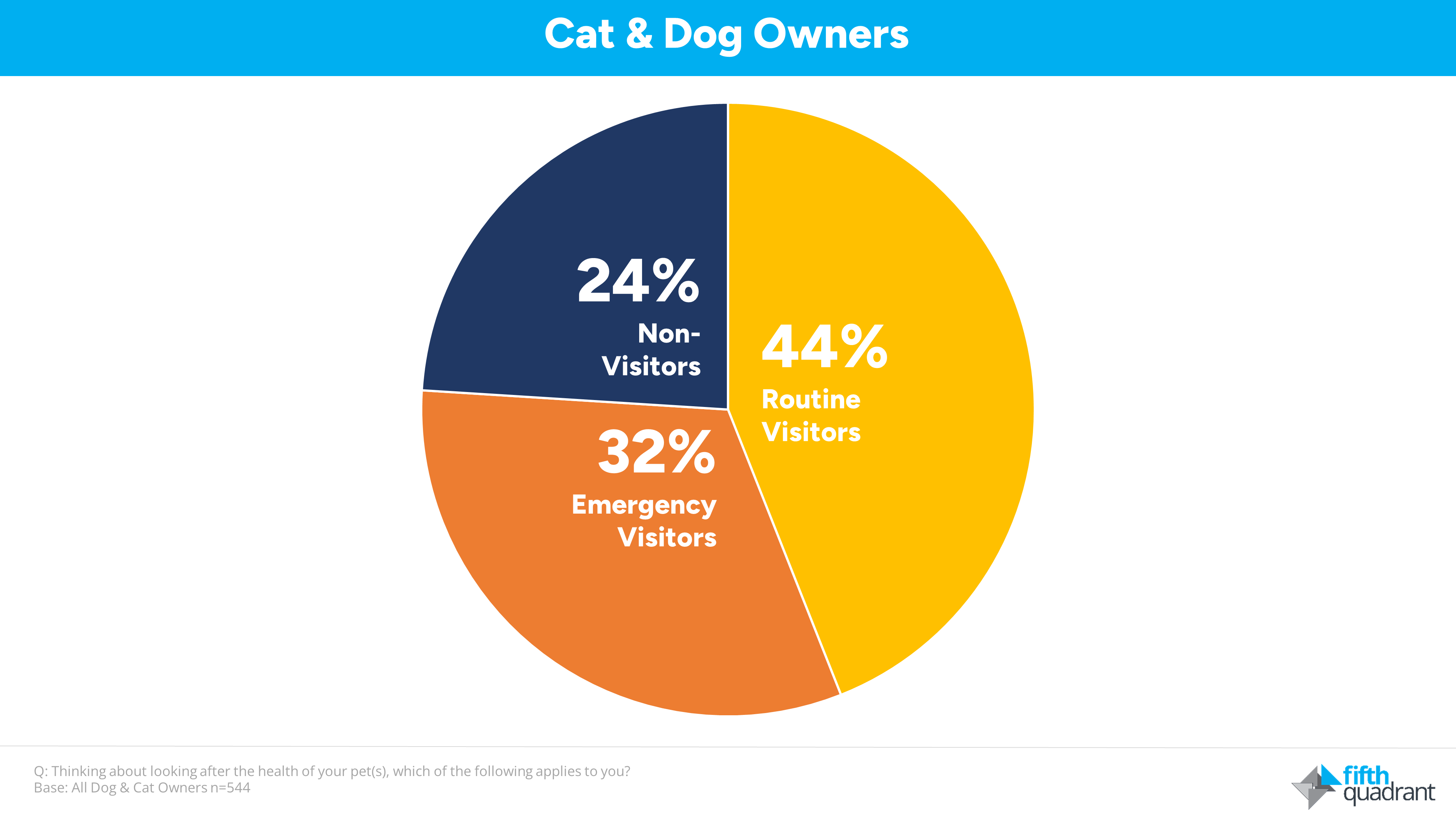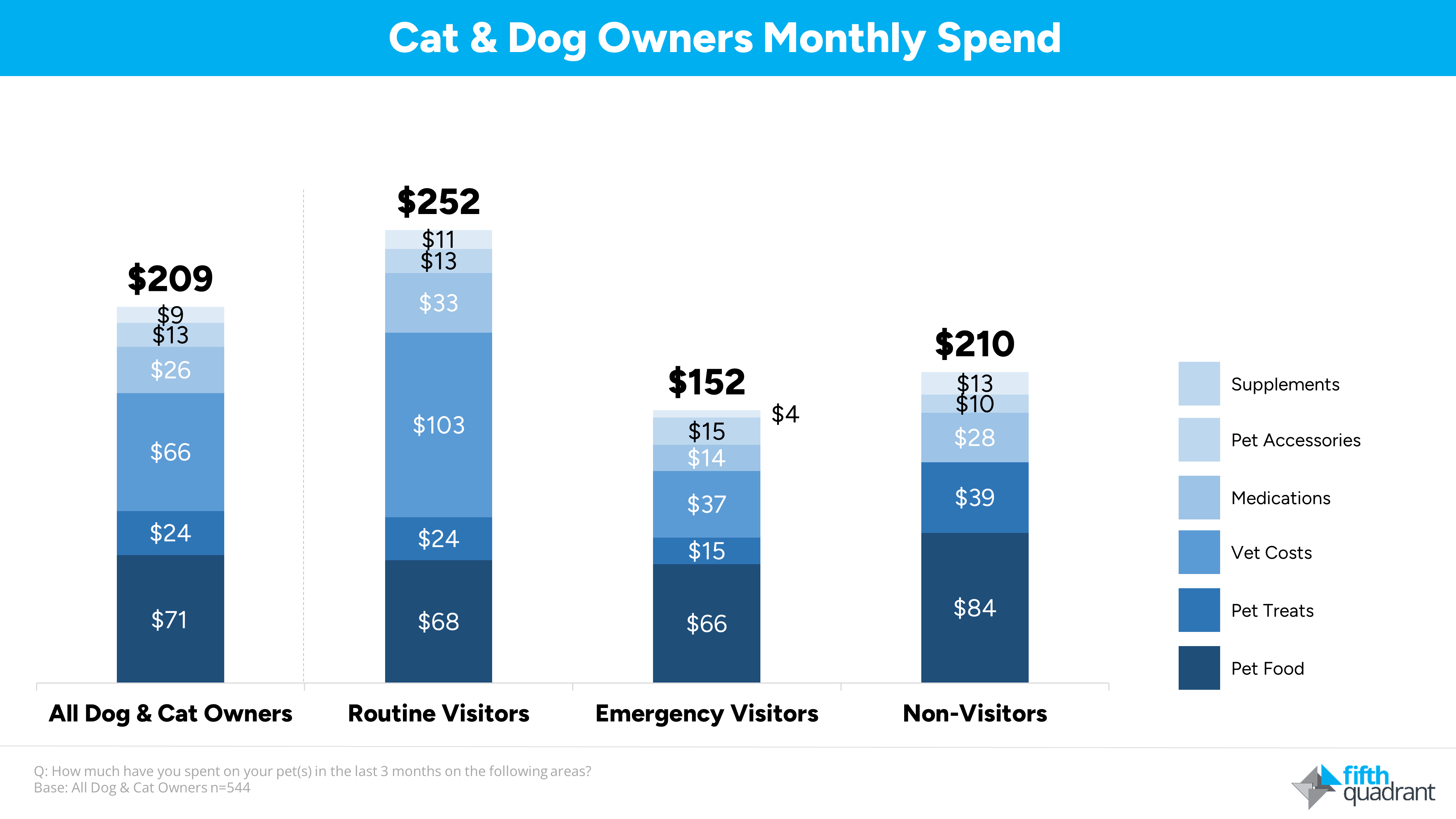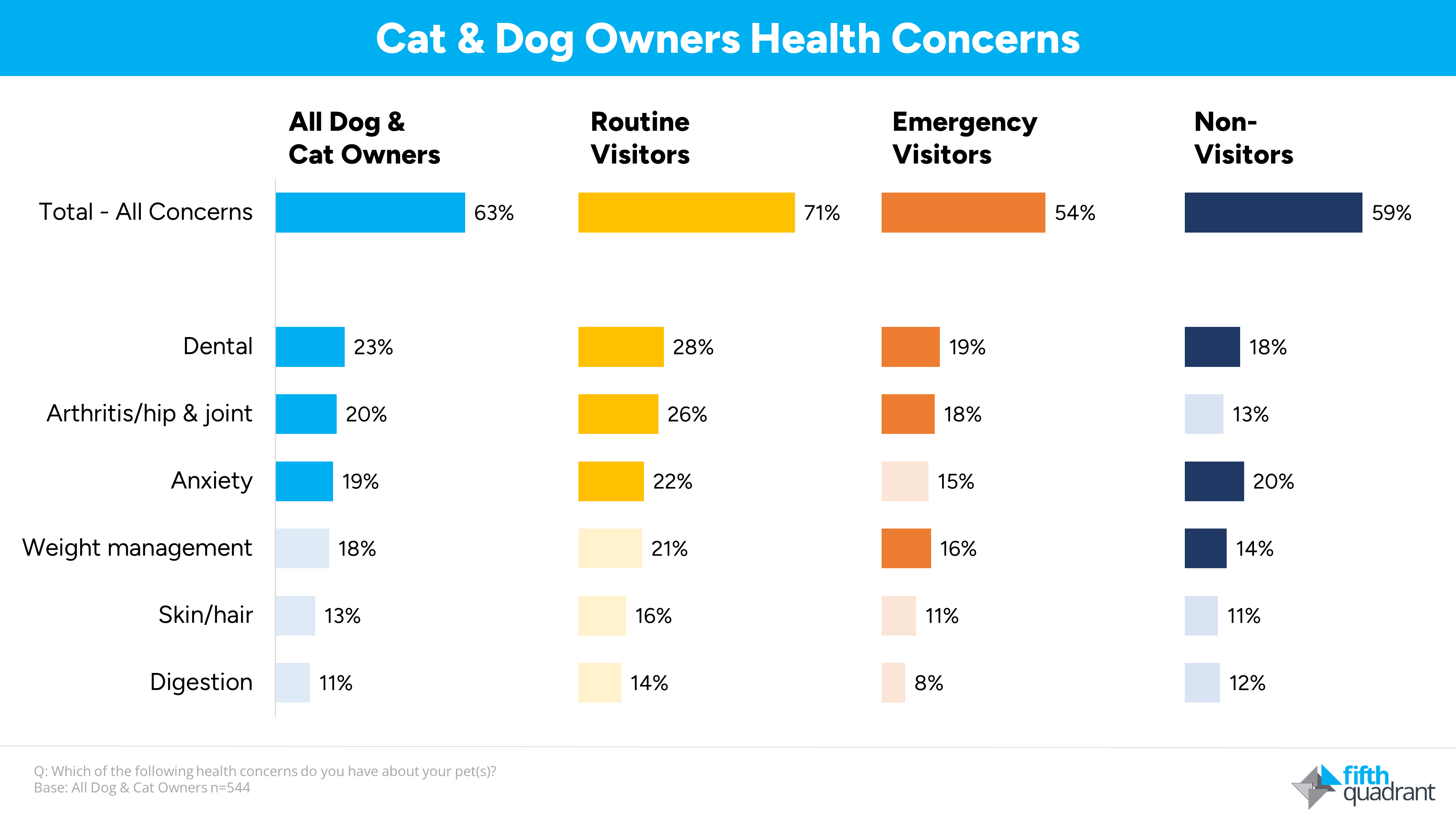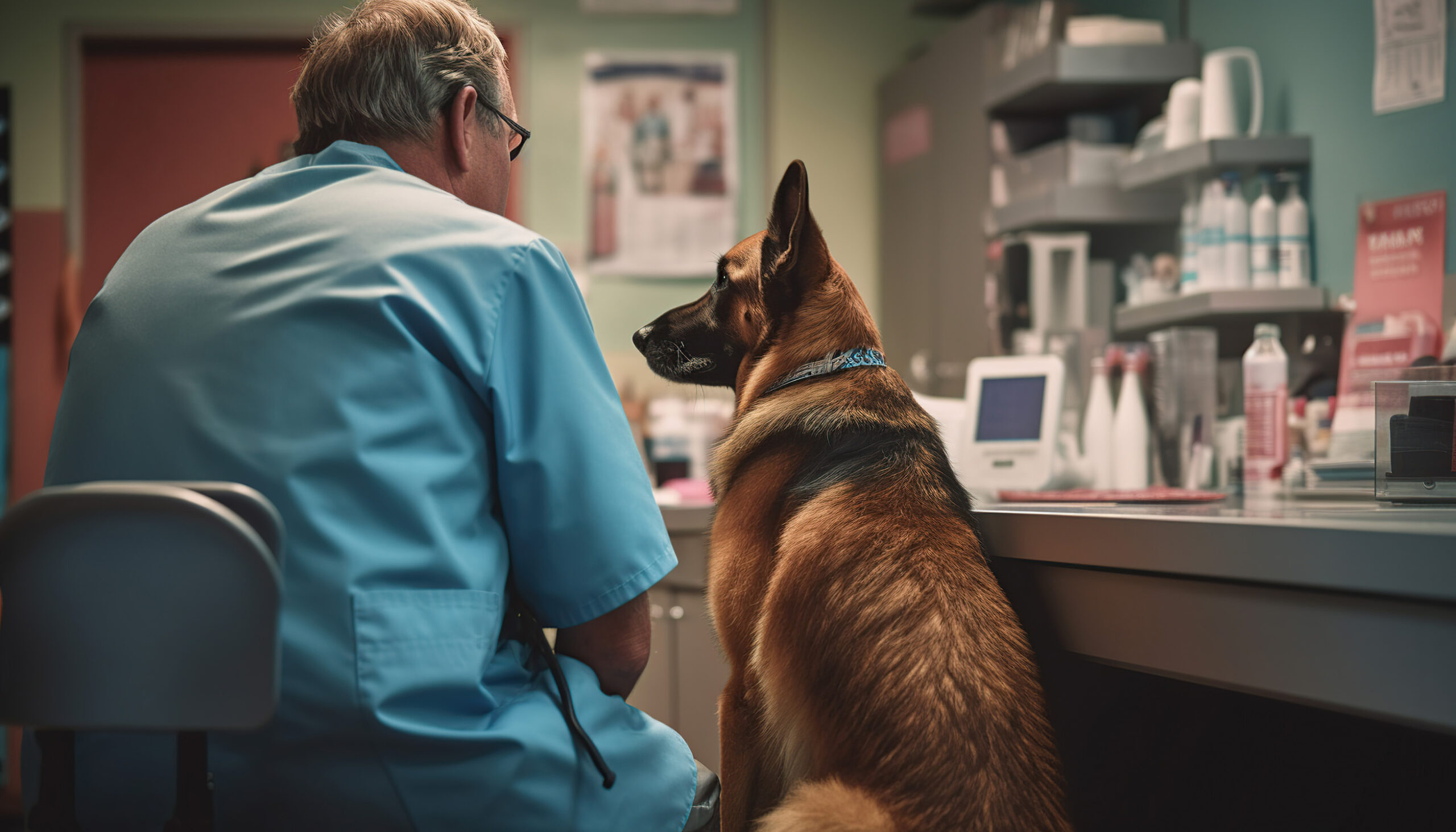Author: Amelia McVeigh | Posted On: 16 Nov 2023
Australians love their pets, and it shows in their spending habits. According to the Fifth Quadrant Consumer Tracker, Australian pet owners spend an average of $209 per month on their furry friends. The majority of this spending goes on food and treats ($96), followed by veterinary care ($66), and medications ($26).
However, there is a significant difference in spending habits between different types of owners. Those who take their pets to the vet for routine visits (44% of cat and dog owners) spend an average of $253 per month, while those who only take their pets to the vet in emergencies (32% of cat and dog owners) spend an average of $152 per month. While routine visitors are spending more now, these visits can help to identify and prevent health problems early on, which can save money in the long run.

On the flip side, those who don’t take their cat or dogs to the vet (24%) spend an average of $173 monthly, without the costs of vet bills, they are spoiling their best friends with food and treats ($122), more than the other pet owners.

Despite the differences in spending, Australian cat & dog owners are generally concerned about their pets’ health and wellbeing. In fact, 63% of pet owners express at least one health concern, with the most common pet health concerns being dental issues, arthritis/hip & joint problems, and anxiety.

Owners are also increasingly taking steps to prepare for their pets’ future healthcare needs. For example, 22% have pet insurance, and this number is even higher among routine vet visitors (28%). Interestingly, non-vet visitors are preparing for the future too, and are just as likely to have pet insurance compared to those who routinely take their pet to the vet.
how to improve education around pet health
Despite varying levels of concern, it is clear that Australian’s care about their pets, and want to invest in their wellbeing, but there are always areas for improvement.
For example, just under one in four owners have not taken their pet to the vet, and one in three are not up to date with vaccination. This may be due to a number of factors, such as cost, lack of awareness of the importance of preventive care, or difficulty accessing veterinary services.
Younger people under 30 years old on lower incomes are more likely to be Non-visitors, suggesting this cohort is reluctant to spend their limited budget on vet fees.
To improve pet care, it is important to educate pet owners about the importance of preventive care and to make veterinary services more accessible. This can be done through a variety of initiatives, such as:
- Public awareness campaigns about the importance of preventive pet care
- Subsidies for veterinary care for low-income pet owners
- Mobile veterinary clinics to reach pet owners in rural and remote areas
- Online veterinary services
conclusion
Australian pet owners love their pets and are willing to invest in their health and wellbeing. However, there is still room for improvement in terms of pet care education and accessibility. By educating pet owners about the importance of preventive care and making veterinary services more accessible, we can ensure that our furry friends receive the care they need to live long and healthy lives.
Want to stay up to date with our latest content? Signup to our monthly newsletter below.
Contact us if you are interested in finding out more, or have questions you’d like answered in the pet health and wellbeing space.
Posted in Animal Health, Consumer & Retail, QN, TL

